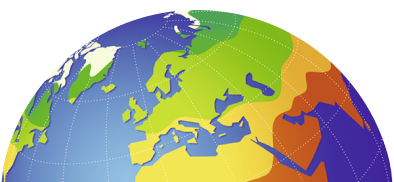Central California and Nevada - Panoramic view from the Coast Ranges to the Great Basin
Land use and water management
978-3-14-100890-6 | Page 186 | Ill. 1

Overview
The panoramic image shows the several hundred kilometres long Central Valley in California. The valley has very different precipitation conditions, due to which intensive agricultural use is only possible thanks to extensive irrigation projects (cf. map 186.2).
Precipitation and climatic conditions
Two characteristic patterns can be identified in the distribution of precipitation. On the one hand, the amount of precipitation increases more and more from the valley floor to the higher elevations, as illustrated by the comparison of the precipitation diagrams of Fresno and Yosemite Valley. On the other hand, the amount of precipitation is largely determined by the course of the coastal range and the Sierra Nevada: Due to the uphill rains, considerably higher precipitation falls on the west sides - facing the Pacific - than on the east sides. The city of Sacramento benefits from its location close to San Francisco Bay, which means that precipitation there is not as high as in Monterey, but still much more pronounced than in Fresno. Death Valley, east of the Sierra Nevada, is extremely hot in the summer months and is one of the driest areas on earth. This is because the humid air from the Pacific Ocean has to cross five mountain ridges before it reaches Death Valley.In 2021, the Death Valley set a world record for the hottest reliably measured temperature in Earth’s history: 54.4°C!




